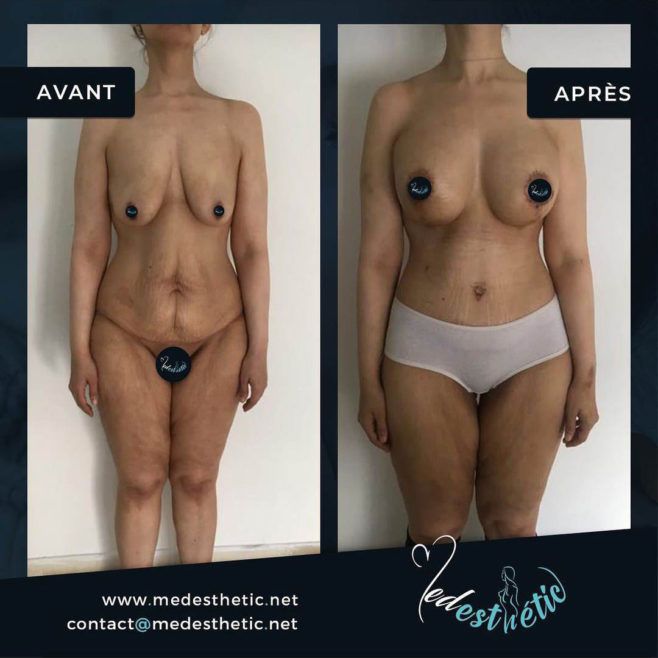Breast lift
Breast lift, also called mastopexy, is the plastic surgery mammoplasty procedure for raising sagging breasts upon the chest of the woman, by changing and modifying the size, contour, and elevation of the breasts.
Breast reduction acts on fat glands and skin whereas mastopexy acts on the skin only, by removing the excess skin to lift the saggy and loose breasts.

Technique
Initially, you’ll talk to a plastic surgeon about a breast lift. During your first visit, your plastic surgeon will likely :
- Review your medical history. Be prepared to answer questions about current and past medical conditions. Tell the doctor if you have a family history of breast cancer.
- Share the results of any mammograms or breast biopsies. Talk about any medications you’re taking or have taken recently, as well as any surgeries you’ve had.
- Do a physical exam. To determine your treatment options, the doctor will examine your breasts — including the position of your nipples and areola.
- He or she will also consider the quality of your skin tone. Breast skin that has good tone will hold the breasts in a better position after a breast lift. The doctor might also take pictures of your breasts for your medical record.
- Discuss your expectations. Explain why you want a breast lift and what you’re hoping for in terms of appearance after the procedure. Make sure you understand the risks and benefits, including scarring and changes in nipple or breast sensation.
Before a breast lift you might also need to :
- Schedule a mammogram. Your doctor might recommend a baseline mammogram before the procedure and another mammogram a few months afterward. This will help your medical team see changes in your breast tissue and interpret future mammograms.
- Stop smoking. Smoking decreases blood flow in the skin and can slow the healing process. If you smoke, your doctor will recommend that you stop smoking before surgery.
- Avoid certain medications. You’ll likely need to avoid taking aspirin, anti-inflammatory drugs and herbal supplements, which can increase bleeding.
- Arrange for help during recovery. Make plans for someone to drive you home after surgery and stay with you as you begin to recover. You might need someone to help you with daily activities, such as washing your hair, during your initial recovery.
- Be at a healthy weight. Consider making dietary changes or participating in an exercise program to assist with weight loss if you’ve gained weight in the past year.
During the procedure
Techniques used to remove breast skin and reshape breast tissue vary. The specific technique your plastic surgeon chooses will determine the location of the incisions and the resulting scars.
Your doctor might make incisions :
- Around the areolae — the darker area surrounding the nipples.
- Extending downward from the areolae to the breast creases.
- Horizontally along the breast creases.
- Your doctor might place stitches deep within your breasts to reshape your breast tissue and, if necessary, reduce the size of your areolae. He or she will remove excess breast skin and shift the nipples to higher positions. Then your doctor will bring together the breast skin and close the incisions with stitches.
- The procedure typically takes 1h30min.
After the procedure
- After a breast lift, your breasts will likely be covered with gauze and a surgical support bra. Small tubes might be placed at the incision sites in your breasts to drain any excess blood or fluid.
- Your breasts will be swollen and bruised for about two weeks. You’ll likely feel pain and soreness around the incisions, which will be red or pink for a few months. Numbness in your nipples, areolae and breast skin might last for about six weeks.
- In the first few days after a breast lift, take pain medication as recommended by your doctor. Avoid straining, bending and lifting. Sleep on your back or your side to keep pressure off your breasts.
- First shower is possible 3 days after the intervention.
- Drainage tubes may be placed near your incisions and are typically removed within a few days. When your doctor removes the tubes, he or she will also probably change or remove your bandages.
- Talk to your doctor about when — or if — your stitches will be removed. Some stitches dissolve on their own. Others must be removed in the doctor’s office, often one to two weeks after the procedure.
- Continue to wear the surgical support bra round-the-clock for three or four days. Then you’ll wear a soft support bra for three or four weeks. Your doctor might suggest using silicone tape or gel on your incisions to promote healing.
- While you’re healing, keep your breasts out of the sun. Afterward, protect your incisions during sun exposure.
Résultat
- You’ll notice an immediate change in the appearance of your breasts — although their shape will continue to change and settle over the next few months.
- Initially, scars will appear red and lumpy. While scars are permanent, they’ll soften and become thin and white within one to two years. Scars from a breast lift can usually be hidden by bras and bathing suits.
- You might notice that your bra size is a little smaller after a breast lift — even if you haven’t had a breast reduction in combination with the procedure. This is simply a result of your breasts becoming firmer and rounder.
- Breast lift results might not be permanent. As you age, your skin will naturally become less elastic, and some sagging might occur — especially if you have larger, heavier breasts. Maintaining a stable, healthy weight can help you retain your results.
Stay duration in Tunisia
It should be a stay of 5 days and 4 nights in Tunisia to make sure that you can go back safely to your country afterwards.
Prices
- Mastopexy without implants : 2200 euros
- Breasts lift with round implants : 2400 euros
- Breasts lift with natural implant (anatomic) : 2500 euros
These prices do not include your plane ticket’s cost or preoperation tests fees.

